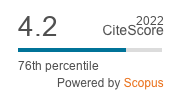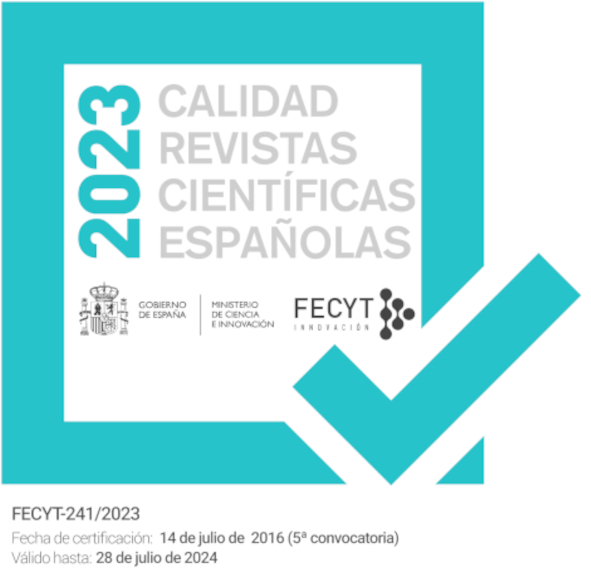The common agricultural policy in the upper guadiana: evolution of water resources and crops
DOI:
https://doi.org/10.18172/cig.1995Keywords:
water resources, overexploitation of aquifers, irrigated lands, Common Agricultural Policy, Upper Guadiana,Abstract
There are clear links between supports from the Common Agricultural Policy (CAP) and the overexploitation of aquifers in the upper basin of the Guadiana River. Historically, European supports to agriculture have been linked to the production, which has resulted in the 169 municipalities in the study area, a strong trend towards the expansion of irrigation lands. The implementation of the Single Payment in 2003 implies a decoupling of production supports, going to charge the beneficiaries of supports a subsidy equal to the average of that perceived during the last three years, i.e. from 2003 payments are maintained even though production is zero. However, there are still many payments linked to production, known as coupled payments (primarily those associated with livestock, woody crops, arable crops and irrigated land). These are the ones with higher capacity to affect the environment, and therefore they are which have been considered in this study (except livestock, no directly related to overexploitation of aquifers). To make this paper, ArcGis program has been used, superimposing or comparing different thematic layers: Protected areas, overexploited aquifers and vulnerable areas to nitrates pollution in the Upper Guadiana, the percentage of irrigated hectares in several municipalities, the irrigated area devoted to arable crops and woody crops, and finally support levels of the Common Agricultural Policy (CAP) in each of the selected sectors and for each of the municipalities in the Upper Guadiana in 2009. It is noteworthy that the municipalities with the highest percentage of irrigated area, especially vineyard, receive higher levels of subsidies, despite of using water from overexploited aquifers. In contrast, supports to organic farming are scarce as compensation income from aquifers. This suggests that CAP subsides coupled to woody crops (mainly the vineyard) and herbaceous crops are detrimental for the environmental quality of the study area, especially water resources. As a positive factor it was found that a percentage of one of the two pillars of the CAP (EAFRD) is devoted for investment axes of Environment and Rural DevelopmentDownloads
References
Alvarez-Cobelas, M., Cirujano, S., Sánchez-Carrillo, S. 2001. Hydrological and botanical man-made changes in the Spanish wetland of Las Tablas de Daimiel. Biological Conservation 97, 89-98.
Burke, S., Mulligan, M., Thomas, J.B. 1999. Optimal irrigation efficiency for maximum plant productivity and minimum water loss. Agricultural Water Management 40, 377-391.
Berzas, J.J., Garcia, L.F., Rodriguez, L.C., Martin-Alvarez, P.J. 2000. Evolution of the water quality of a managed natural wetland: Tablas de Daimiel Natural Park (Spain). Water Research 34, 3161-3170.
CHG 2008. Plan Especial del Alto Guadiana. Anexo VII Memoria técnica. Disponible en: http:// www.chguadiana.es/?url=32&corp=chguadiana&lang=es.
CHG 2009a. Demarcación Hidrográfica del Guadiana. Plan Hidrológico 2009. Disponible en: http://www.chguadiana.es.
CHG 2009b. Capas SIG facilitadas por la Confederacion Hidrografica del Guadiana (comunicación directa).
Cirujano, S., Casado, C., Bernues, M., Camargo, J.A. 1996. Ecological study of Las Tablas de Daimiel National Park (Ciudad Real, Central Spain): Differences in water physico-chemistry and vegetation between 1974 and 1989. Biological Conservation 75, 211-215.
CLM 2008. Programa de Desarrollo Rural de Castilla-La Mancha 2007-2013. Tomo II. Anexo I. Disponible en: http://www.jccm.es.
Cobelas, A., Sanchez-Soler, M.J., Carrasco, M., García Consuegra, B., Escuderos, J., Alvarez- Cobelas, M. 1996. Aspectos históricos. En Las Tablas de Daimiel, ecología acuática y sociedad, M.J. Alvarez-Cobelas, S. Cirujano (eds.), ICONA, Madrid, pp. 219-234.
Compes Lopez, R. Garcia Alvarez-Coque, J.M. 2009. La Reforma de la PAC del 2013 y estrategias para España. Observatorio de Política Exterior Española. Fundación Alternativas.
Conan, C., de Marsily, G., Bouraoui, F., Bidoglio, G. 2003. A long-term hydrological modelling of the Upper Guadiana river basin (Spain). Physics and Chemistry of the Earth 28, 193-200.
FEAGA 2010. Fondos Europeos Agrícolas FEAGA y FEADER. Informe mensual de pagos. Ejercicio 2010 (16/10/09 a 15/10/2010). Disponible en: http://www.feaga.es.
Fornes, J., Rodríguez, J.A., Hernández, N., Llamas, M.R. 2000. Possible solutions to avoid conflicts between water resources development and wetland conservation in the “La Mancha Humeda” Biophere Reserve (Spain). Physics and Chemistry of the Earth 25, 623-627.
Garcia Rodriguez, M., Llamas, M.R. 1992. Aspectos hidrogeológicos en relación con la génesis y combustión espontanea de las turbas en los “Ojos” del Guadiana. Actas del III Congreso Geológico de España y VIII Congreso Latinoamericano de Geología, Salamanca, Tomo 2, pp. 227-239.
Garcia-Ruiz, J.M, Lopez-Moreno, J.I., Vicente-Serrano, S.M., Lasanta-Martinez, T., Begueria, S. 2011. Mediterranean water resources in a global change scenario. Earth-Science Reviews 105, 121-139.
Gimenez, R., Casali, J., Chahor, Y. 2012. Herramientas informáticas de gestión de terrenos agrarios: potencialidades del modelo AnnAGNPS en Navarra. Cuadernos de Investigación Geográfica 38 (2), 107-121.
Holtz, G., Pahl-Wostl, C. 2012. An agent-based model of groundwater over-exploitation in the Upper Guadiana, Spain. Regional Environmental Change 12, 95-121.
IGME 2004. Informe número 4. Zonas húmedas Daimiel. Disponible en: http://www.igme.es.
JCCM 2009. Pagos. Disponible en: http://pagina.jccm.es/agricul/paginas/agricultura-ganaderia/ pagos.htm.
Kilsby, C.G., Tellier, S.S., Fowler, H.J., Howels, T.R. 2007. Hydrological impact of climate change on the Tejo and Guadiana Rivers. Hydrology and Earth System Sciences 11, 1175-1189.
López González, A. 2002. Los procesos de urbanización en un territorio agrario: La Mancha conquense. Actas del XI Coloquio de Geografía Rural. Los espacios rurales entre el hoy y el mañana. Universidad de Cantabria, Santander, pp. 379-388.
López-Moreno, J.I., Begueria, S., Vicente-Serrano, S.M., García-Ruiz, J.M. 2007. Influence of the North Atlantic Oscillation on water resources in central Iberia: Precipitation, streamflow anomalies, and reservoir management strategies. Water Resources Research 43, W09411. doi: 10.1029/2007WR00584.
Lopez Sanz, G. 1999. Irrigated agriculture in the Guadiana River high basin (Castilla-La Mancha, Spain): environmental and socioeconomic impacts. Agricultural Water Management 40, 171-181.
Llamas, R. 1988. Conflicts between wetland conservation and groundwater exploitation: two case stories in Spain. Environmental Geology and Water Sciences 11, 241-251.
MARM 2009. Hojas 1T. Subdirección General de Estadística. Ministerio de Agricultura y Medio Rural y Marino.
MARM 2010. Hojas 1T. Subdirección General de Estadística. Ministerio de Agricultura y Medio Rural y Marino.
Martínez-Santos, P., de Stefano, L., Llamas, M.R., Martínez-Alfaro, P.E. 2008. Wetland Restoration in the Mancha Occidental Aquifer, Spain: A Critical Perspective on Water, Agricultural, and Environmental Policies. Restoration Ecology 16, 511-521.
Martínez Vega, J., Navalpotro Jiménez, P., Cebrian, J.A., Romero Calcerrada, R. 1995. Repercusiones de la sobreexplotación de acuíferos y de la P.A.C en la sustentabilidad de la agricultura manchega. Estudios Geográficos 219, 337-369.
Navarro, V., García, B., Sanchez, D., Asensio, L. 2011. An evaluation of the application of treated sewage effluents in Las Tablas de Daimiel National Park, Central Spain. Journal of Hydrology 401, 53-64.
Peinado, M., Plaza Tabasco, J., Ruiz Pulpon, A.R., Sanchez López, L., Serrano de la Cruz, M.A. 2009. La Mancha y las lagunas de Ruidera. En Itinerarios geográficos y paisajes por la provincia de Ciudad Real, M. Peinado, J.L. Garcia Rayego, E. González Cardenas, A.R. Ruiz Pulpon (Coords.), Universidad de Castilla-La Mancha, Ciudad Real, pp. 17-88.
Pillet Capdepon, F. 2011. La Mancha. Transformaciones de un espacio rural. Celeste Ediciones, Madrid.
Romero Calcerrada, R., Martínez Vega, J. 1997. Transformaciones de usos y estructuras agrarias en La Mancha Occidental. Estudios Geográficos 228, 451-475.
Ruiz Pulpon, A.R. 2007. Tipología territorial de la agricultura de regadío en los municipios de la cuenca hidrográfica del Guadiana. Consejo Económico y Social de Castilla-La Mancha, Toledo, 487 pp.
Sanz Donaire, J.J., Diaz Álvarez, M.D., Sanchez Pérez de Evora, A. 1994. La Mancha: transformaciones forzadas de los humedales. Boletín de la A.G.E. 18, 39-61.
Seo/BirdLife y WWF España 2010a. Caso de Estudio: La Montana Alavesa (Alava). Relación entre la Política Agraria Común y el Medio Ambiente en España. Disponible en: http://www.wwf.es.
Seo/BirdLife y WWF España 2010b. ¿Quien contamina cobra? Disponible en: http://www.wwf.es.
WWF España, Seo/BirdLife, Ojos del Guadiana Vivos, Greenpeace, Ecologistas en Acción 2006. Propuestas de los grupos ecologistas al Plan del Alto Guadiana.
Xu, H., Corte-Real, J., Quian, B. 2007. Developing daily precipitation scenarios for climate change impact studies in the Guadiana and Tejo basins. Hydrology and Earth System Sciences 11, 1161-1173.
Downloads
Published
How to Cite
Issue
Section
License
The authors retain copyright of articles and authorize Cuadernos de Investigación Geográfica / Geographical Research Letters the first publication. They are free to share and redistribute the article without obtaining permission from the publisher as long as they give appropriate credit to the editor and the journal.
Self-archiving is allowed too. In fact, it is recommendable to deposit a PDF version of the paper in academic and/or institutional repositories.
It is recommended to include the DOI number.
This journal is licensed under a Creative Commons Attribution 4.0 International License











